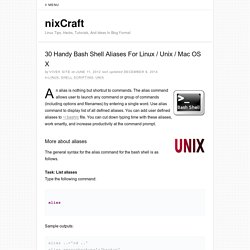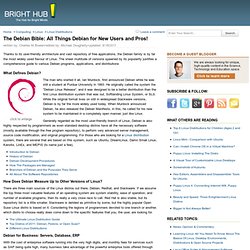

Learn Linux, 101: A roadmap for LPIC-1. About this series This series of articles helps you learn Linux system administration tasks.

The topics mirror those of the Linux Professional Institute Certification (LPIC) level 1 (LPIC-1) exams. You can use the articles to prepare for certification, or just to learn about Linux. There are two exams for LPIC-1 certification: exam 101 and exam 102, and you must pass both to attain LPIC-1 certification. Each exam has several topics, and each topic has several objectives. The material in these articles corresponds to the April 2009 objectives for exam 101 and exam 102 You should always refer to the objectives for the definitive requirements. This roadmap is in progress; as we complete articles, we add them to the roadmap. Note: New material will be added over the coming months as it becomes available. Exam 101 Exam 101 - Topic 101: System architecture Where are the articles? Back to top Exam 101 - Topic 102: Linux installation and package management.
Commandlinefu.com. Migrating data. Introduction Migrating or moving data is a common task.

Whether it is copying data across the network to a new filesystem, or copying logical volumes within the same volume group or to a different volume group or maybe just creating a backup of a filesystem. The reasons for moving or copying data could be for performance issues, or general growth of data where there is not enough space in its current environment. There are different tools that can be used for the above-mentioned data movement tasks, such as migratepv, cplv, tar, cpio, cp or rsync. For jfs, you can use splitcopy or, for jfs2, use snapshot to take a copy of a filesystem. Introduction to text manipulation on UNIX-based systems. Using standard utilities Brad YoesPublished on March 14, 2012 A basic tenets of UNIX philosophy is to create programs (or processes) that do one thing, and do that one thing well.

It is a philosophy demanding careful thought about interfaces and ways of joining these smaller (hopefully more simple) processes together to create useful results. Normally textual data flows between these interfaces. Over time, more and more advanced text processing tools and languages have been developed. Use of cat The cat command is one of the most basic commands. How can I open a file in my terminal, like nautilus does it. 30 Handy Bash Shell Aliases For Linux / Unix / Mac OS X. An alias is nothing but shortcut to commands.

The alias command allows user to launch any command or group of commands (including options and filenames) by entering a single word. Use alias command to display list of all defined aliases. You can add user defined aliases to ~/.bashrc file. You can cut down typing time with these aliases, work smartly, and increase productivity at the command prompt. More about aliases The general syntax for the alias command for the bash shell is as follows. Task: List aliases Type the following command: alias Sample outputs: alias .. By default alias command shows a list of aliases that are defined for the current user. How Can I Troubleshoot My Linux PC or Laptop? The Ultimate Guide to Debian. What Defines Debian?

The man who started it all, Ian Murdock, first announced Debian while he was still a student at Purdue University in 1993. He originally called the system the “Debian Linux Release”, and it was designed to be a better distribution than the first Linux distribution system that was out, Softlanding Linux System, or SLS.
While the original format lives on still in widespread Slackware versions, Debian is by far the more widely used today. When Murdock announced Debian, he also released the Debian Manifesto, in this, he called for his new system to be maintained in a completely open manner, just like Linux. Generally regarded as the most user-friendly branch of Linux, Debian is also highly respected by programmers as even standard desktop distros have all the necessary software (mostly available through the free program repository), to perform very advanced server management, source code modification, and original programming.
(3) Autotools: What are some good resources for learning about Autotools. Restart Only GUI Session Or Restart Only Operating System. Shell/CheatSheet. This page contains brief descriptions of many GNOME Shell features, such as keybindings, drag and drop capabilities, and special utilities.

We are continuing to work on making all these features more discoverable, so this page can serve a dual purpose of describing these features to the early adopters and helping us keep track of the features that are not easily discoverable. Many of the features relate to starting and switching between applications. Some of them are available in the current versions of GNOME and some are new. Other features are built-in utilities, such as a screencast recording tool and an integrated inspector tool and JavaScript console. On the desktop Alt+Tab switches between applications. Alt+Shift+Tab cycles through applications in reverse direction. Alt+[key above Tab] (eg, Alt+` on a US keyboard) switches between windows within an application. The applications running on other workspaces are displayed after a vertical separator.
The top bar — [Alt] ‒> In the overview.